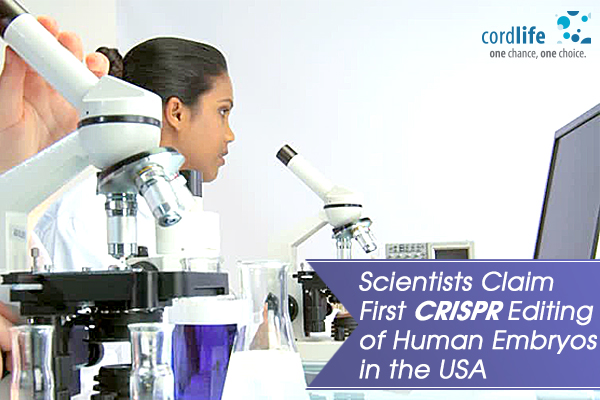Table of Contents
With CRISPR technology editing the DNA code of human embryo, can we hold our breath for an absolute eradication of inherited disorders like Thalassemia and similar conditions? The answer is still unclear as there is no such publication about the claims on decoding the DNA with CRISP editing technology. As per the MIT Technology Review, the research team led by Shoukhrat Mitalipov at Oregon Health and Science University has been successful in an effort to edit the genes of human embryo using CRISPR editing technology for the first time.
Gene editing has been a controversial practice, but still we had earlier seen three such efforts involving human embryo editing in China.
You can call it genetically modified human embryos or improved embryos sans defective cells with mutations responsible for inherited diseases. Even if DNA editing is controversial, it contributes to the elimination of hereditary illnesses.
Advantages of CRISPR Editing Technology
The genetic manipulation using the CRISPR editing technology in the human embryos seems viable and an effective way to remove defects from the genes, and combat thousands of diseases. The technology uses molecular scissors to influence the performance of the gene sequencing. And as a result, it can eliminate the undesirable components from it. Hence, it paves the way for the replacement of new and improved DNA with the faulty genes.
The claim also raises hopes for families with concerns for the genetic diseases, as it is capable of preventing the further spread of the deadly disorders like malaria in the body.
There is another way for which the finding holds a true and promising possibility for our future generation as well. By editing the gene sequencing in the human embryos, we can expect the “human germline editing”. This means when the editing technology will instill embryos of offspring with new mutated cells, the characteristics and features of the edited DNAs will be carried through offspring after offspring. So, the germline gets fixed permanently in each successive generation and follows a hereditary pattern of a family.
With the new CRISPR editing technology, we have no more editing errors known as “mosaicism” as was the case with earlier Chinese experiments. And the desired improvement technique is thought to be followed not only by some, but all the cells in the embryo.
Contradictory Opinion About The Claims
Some critics argue that we absolutely do not need such technology to detect deformities in human embryos and correct them with CRISPR editing technology. That’s because the efficacy of the technology is deemed unfit as it is unable to perform as expected if two copies of defective genes are present in the embryos.
On the other hand, we already have preimplantation diagnosis technology or OPD to detect disease causing cells in the embryos. And by using this technique, the faulty genes can be replaced through in vitro fertilization.
Disadvantages
The techniques seem to violate the rule of natures as it advocates for the creation of the designer babies. Rather than editing the disease causing genes, the technique is more likely to foster the enhancement techniques, meaning future parents would seek editing techniques to remove imperfections in their children. And we fear that this approach would lead to a genetic discrimination.
However, if the claims are true, we can free ourselves from a range of diseases, including anemia, Huntington’s disease and other genetic diseases through gene modifications. So, let’s keep our fingers crossed for a true future possibility.
